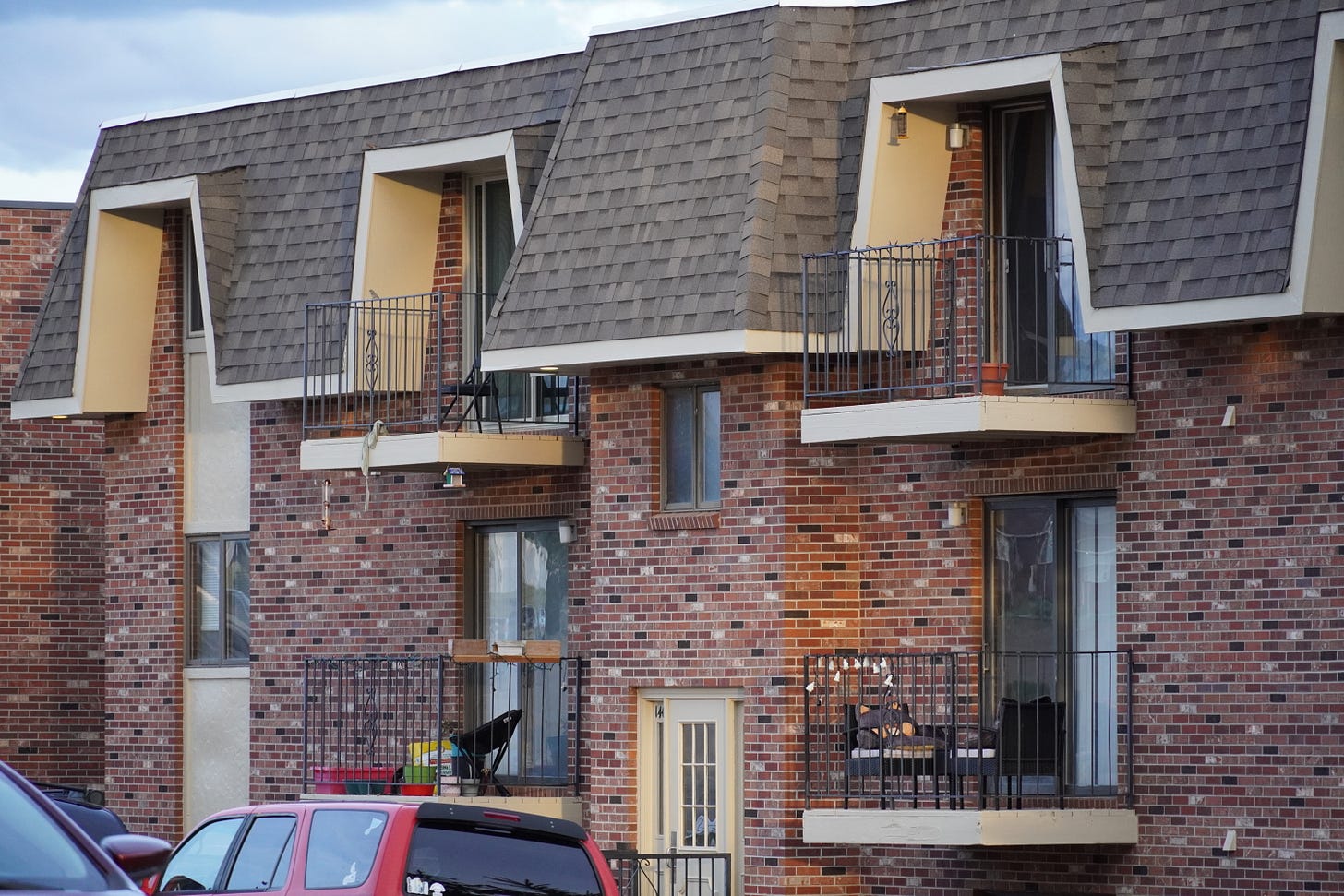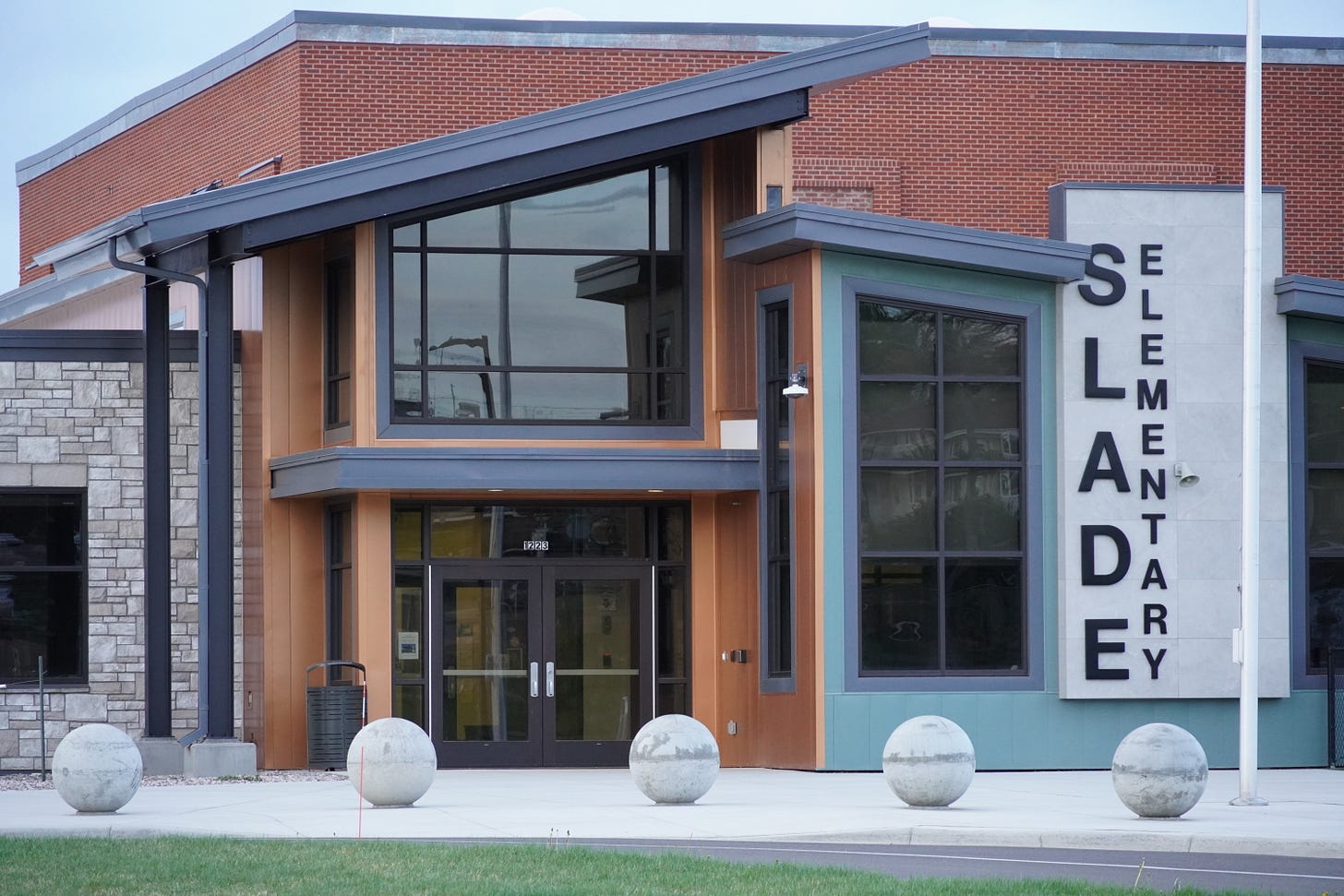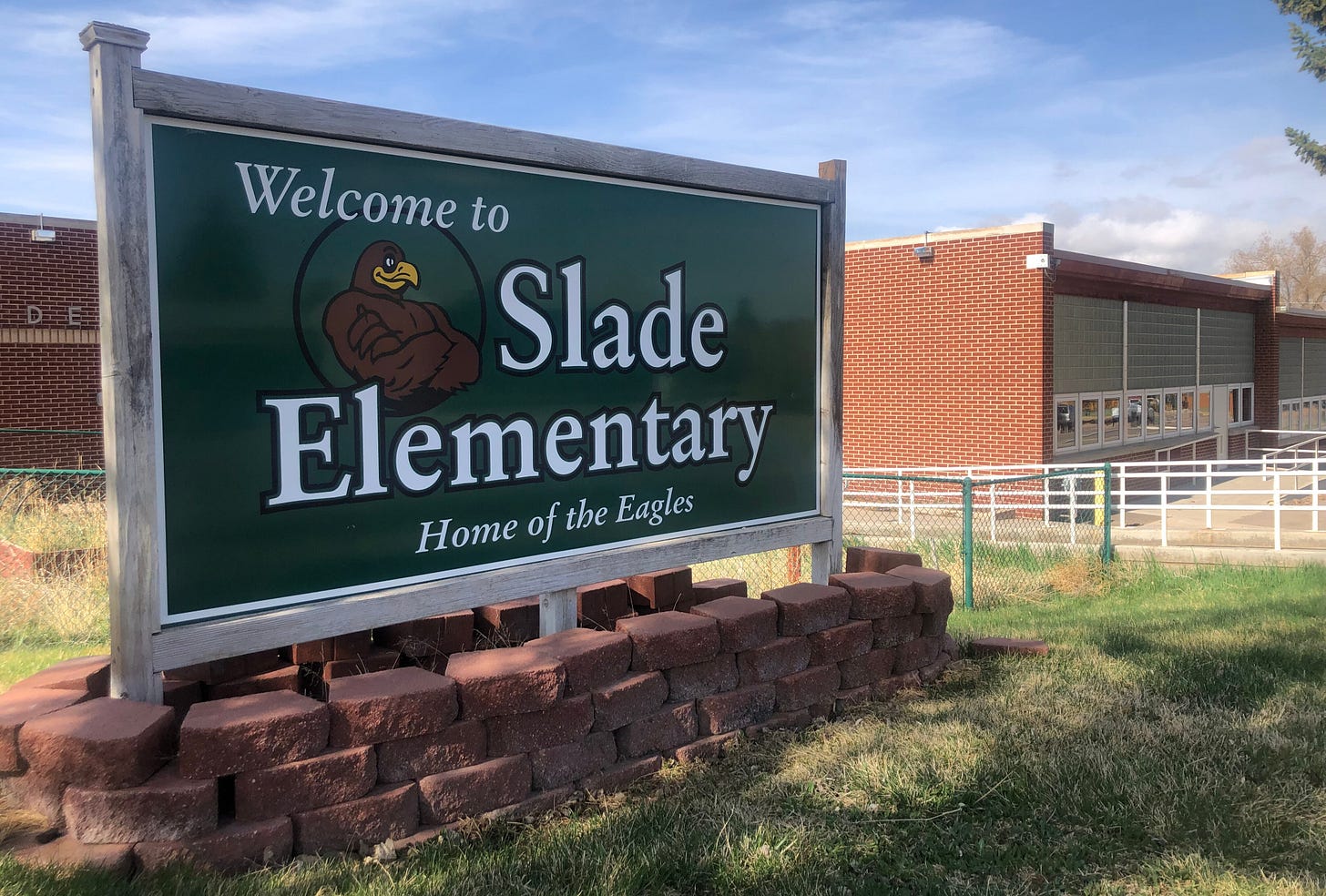The ambitious plan to replace Old Slade with affordable housing
Community partners are hoping to turn the abandoned school grounds into homes for teachers, hospital staff and other working professionals who have struggled to find shelter amid an ongoing shortage.

Albany County School District No. 1 will soon demolish the old Slade Elementary School. Interested parties across the community are hoping new homes can rise from the rubble.
Assistant City Manager Todd Feezer is among them. For several months, he’s been angling to use the soon-to-be-vacant property to address one of the city’s most persistent problems: housing affordability.
“We want to have 34 attainable workforce-occupied houses,” Feezer told the Albany County School Board during a meeting in February. “That’s the No. 1 goal. We’d also like to prove that a model where organizations [are] working together can help overcome issues, whether it’s public-private partnerships … or just simply government organizations that are willing to forego profitability in an effort to make workforce-attainable housing possible.”
So far, the plan looks like this: Once the abandoned school is demolished, the school district could sell it to a developer who puts up duplexes on the 17 residential lots that make up the Old Slade footprint. Financial contributions from community partners and deed restrictions limiting resale value could ensure a reasonable price tag for the 34 newly minted housing units.
The new units would not be the cheapest in Laramie, though they would likely be cheaper than the median, with the aim of being “workforce attainable.”
In other words: homes for middle class professionals — public school teachers, nurse practitioners, WyoTech instructors and more — who regularly struggle to find housing, or to afford it, in Laramie.
Like most of the nation, Laramie faces a housing crunch. Not enough homes. Not enough variety. And a “missing middle,” meaning the market has failed to provide homes for those who no longer want to rent, but don’t have the incomes necessary to buy the pricier homes on offer.
Ivinson Memorial Hospital CEO Doug Faus said housing is a major obstacle to employee recruitment.
“We constantly hear from our employees that they struggle to find affordable housing,” he said. “At all levels, it’s hard to find housing in Laramie.”
The school district faces a similar challenge, said Albany County School Board Trustee Nate Martin, who was the first to propose such a plan for Old Slade.
“This is not really a do-gooder charity project,” Martin said. “This is addressing a very real problem that the school district has recruiting and retaining new teachers who we want to be working for the district and educating children in our community. But because of the radical increase in the cost of housing over the past five or so years, they just struggle to find a place to live.”
The plan grew out of the Albany County Housing Coalition, a wide-ranging group of community representatives who have been meeting regularly to coordinate responses to the housing crisis.
“We all just kind of came together and realized that if we want Laramie to continue to grow and thrive, that it’s going to take a mixed effort to get into this housing initiative to get some things solved,” Feezer told the Laramie Reporter.
It’s not a done deal. The plan does not yet have the school board’s official approval; there will need to be more trustee discussion and community input before that can happen. And financing — coming up with the high upfront costs of development — will be a major hurdle.
But if all goes well, both Feezer and Martin said what happens at Old Slade could serve as a model for the future.
Laramie needs at least 2,600 more homes, according to city staff’s most recent presentation on housing. But success at the Old Slade property might pave the way for other, similar community-backed projects.
“I’m not gonna lie to you, I don’t think these 33-34 homes fix anything,” Feezer said. “But it’s at least a start.”
At the end of the day, the assistant city manager said housing is about opportunity and quality of life. Feezer said he was able to buy a house at “the ripe age of 18 years old.” But times have changed. He said his daughter and her fiancé, for example, don’t have the same opportunities today.
“It scares me to death that a young couple making pretty good wages together will never be able to afford a home in Albany County,” he said. “We’ve got to do something to help get this ship righted.”
In addition to serving as a model for public-private partnerships locally, the unique effort to leverage community resources in the service of housing could serve as a demonstration for other Wyoming communities facing their own crises.
If the Old Slade plan is ultimately successful, Trustee Martin said those other communities could look to this experiment in Laramie as inspiration.
“Everyone is having a hard time keeping employees and attracting employees at the rates we can afford to pay, given the cost of housing,” Martin said. “It’s not unique to our community. And frankly, I’m hoping that if we can figure out some kind of partnership solution — where you’ve got local government entities working with local businesses to provide an avenue for affordable housing — it’s something that might be replicated around the state.”
The school board plans to sell the property post-demolition. That could happen as early as next fall.
Vacating Old Slade
Located just a few blocks from LaBonte Park, Old Slade served the students of its neighborhood for almost 70 years.
Old Slade’s final semester was spring 2022; its students reported the following fall to the new Slade Elementary one block to the north.
School officials quickly ruled out repurposing Old Slade and approved the aging facilities’ demolition two years ago this month. They acquired state approval, then state funding, in the year that followed. The demolition itself is scheduled for completion by November.
The school board unanimously approved a $1.2 million bid for the school’s demolition and abatement at its meeting Wednesday.
Throughout this time, both officials and community members have raised the idea of converting the property into affordable housing.
Community support, political realities
John Freeman, the founder of the Wyoming Community Foundation, has been an outspoken supporter of the plan.
“There is a huge opportunity to use that property for the good of the entire community,” Freeman told the trustees two years ago. “As I reflect on it, the No. 1 issue in our state is affordable housing and I would strongly recommend you consider that in some way.”
This winter, he returned to the board to reiterate that support.
“There is a community, particularly a business community, that is really looking forward to a project that can really become a model for housing of a workforce nature,” Freeman said.
He wasn’t alone. Several other commenters — many of them residents of the Old Slade neighborhood — also turned up to the Feb. 12 meeting to say they’d like to see homes where the old school still stands.
“There’s widespread public support for this project,” said Allison Gernant, who said she has lived one block from Old Slade for more than a decade. “I think tired models of capitalism in terms of housing are not going to help us right now in this inflated housing market, but community-based approaches, like the one that we are hoping that you will continue to think about, may stand a chance.”
Michelle Visser, a Snowy Range Academy art teacher who also lives in the neighborhood, told the board she wanted to see the land used “for centralized, thoughtfully designed workforce housing” for professionals working for the school district, hospital or other community partners attached to the plan.
“This is a long-game investment,” Visser said. “You have the potential to be part of an innovative solution to a well-documented problem. We as educators invest in our children knowing it’s going to take 12 years to get them to where they need to be. Can we have a similar mindset when it comes to providing housing for these professionals?”
The board even heard from Laramie City Councilor Will Bowling.
“For those of us that choose to work in public service … we do so because we believe in this place,” the councilor told the school board. “We want to make it even better than it is, and continue to make it better for the generations to come behind us. This provides you a unique opportunity for public entities and private entities to come together to solve a problem and put models forth for future problem solving.”
Feezer said the early outpouring of community support is a good sign. Not every housing proposal is met with such enthusiasm. But the Slade plan has seen only minimal public pushback.
The board didn’t receive any comments at the February meeting opposed to the idea of putting homes on the Old Slade property.
But the political realities of Laramie have shaped the proposal as it currently exists.
Old Slade is zoned “R2” — a multi-family residential classification that would allow developers to put four-plexes on each of its 17 lots.
Yet Feezer and allies have proposed duplexes, which would create 34 individual units. Feezer told the school board he was aiming for the middle path between single-family homes and apartment buildings.
“We could take the 17 units and turn it into 68 units [but] I’m not so sure that neighborhood would be very appreciative of 68 units coming into that neighborhood at this point,” he said. “What we’ve proposed to offer is higher density, but something that we believe would be acceptable in the neighborhood.”
Feezer has cause for concern. Community protests can and have killed development proposals before they can add a single unit of housing. This is especially true for apartment buildings and other dense housing, which is sometimes seen as a threat to the property values enjoyed by single-family homeowners.
But one way or another — and no matter what happens to the Old Slade property — city staff have been consistently clear that single-family housing alone will not fix Laramie’s crisis.
Laramie’s 2,600+ missing homes
The city has been wrestling with its housing shortage for at least a decade.
In 2015, the local government commissioned an exhaustive housing study, which was followed by a 2018 County Housing Report and a 2020 Housing Strategy Plan. Additionally, the Wyoming Community Development Authority published a statewide needs assessment and a statewide action plan, in 2024 and 2025 respectively, that detailed Albany County alongside the rest of the state.
Across a collective total of more than 600 pages, the reports and plans lay out the scope of the housing crisis and what’s needed to reverse it.
Of particular note, the reports show that, starting from 2015 figures, Laramie would need 4,100 new homes by 2030 to eradicate its existing shortage and keep up with new demand.
Ten years since the first housing study, and just half a decade from 2030, the city is not close to hitting its target.
Laramie has added more than 800 units since 2015. Factoring in the dozens of lots which are “ready to build” and the nearly 700 preliminary plats approved by the city — both of which could translate into homes in the near future — officials estimate Laramie still needs around 2,600 other units by the end of the decade to meet the goal laid out in 2015.
At an April meeting of the Laramie City Council, Community and Economic Development Director Derek Teini said Laramie will not hit that figure.
“We’re not keeping pace,” he told councilors.
Laramie isn’t alone in this. Most communities in the United States are facing their own housing crunch. The pandemic threw an unexpected wrench into much of modern American life, including new home construction. Tariffs and other inflationary pressures have raised the cost of lumber, labor and other inputs, leading to fewer and more expensive houses being built.

Laramie faces another significant and specific hurdle: its own poverty. Albany County has a 24% poverty rate, meaning nearly one out of every four residents lives below the poverty line. About 18% of homeowners and about 57% of renters are cost-burdened, meaning they spend more than 30% of their income on housing.
But Laramie also stands out for the efforts it’s made to counter these challenges.
The council has sought to make development more attractive by reducing minimum lot sizes, setbacks and parking requirements. Each of these can make denser housing developments more realistic for budget-conscious developers.
Denser housing in multi-family zones allows for more affordable individual units. Accessory dwelling units in single-family zones can increase density while also allowing homeowners to offset high single-family prices by offering up a rental.
The 2020 Housing Strategy recommended several of these code changes while outlining their benefits.
“Literally every single one of these has been done,” Teini told the councilors in April. “That’s not a small feat, and it was something that many communities really look to Laramie in Wyoming right now and are trying to figure out how to do the same thing.”
With those big code changes already on the books, the next push for addressing the housing crisis will take the form of projects like the plan for Old Slade. Public-private partnerships can chip away at the city’s shortage a few dozen, or fewer, homes at a time.
Meanwhile, the city is planning to propose a new position — a “head hunter,” according to the city manager — who could recruit developers and entice them to build homes in Laramie.
The city will also continue upgrading the infrastructure that underlies, literally, all housing possibilities.
“We’ve been laying the seeds for development to occur,” Feezer told the council, referencing a storm and sanitary sewer buildout on Bill Nye Ave., as well as the North Side Water Tank project. “Everybody’s doing everything they can to get those seeds ready for when it rains. And it’s coming. We’re going to see some big changes … and it’s really going to lead to some major outcomes for this community.”







Thank you for reporting on this excellent news.
Great article! I just forwarded it to one of our newly-elected school board members in Gillette who is also a developer. We have an empty school up here too that might qualify for new housing.